8/22 On SkyEurope you have to pay for everything, including Cokes or peanuts. Thankfully the flight from Dubrovnik was short and we arrived at Pope John Paul II Airport in Krakow on time. The airport is very small with the planes parking on the tarmac and then a bus takes you to the terminal (this is fairly common in Europe). Another bus takes you from the airport to the nearest train station for the trip to town. The train looked brand new and had cool flat panel TV´s. The fare was a little over $2.
My hostel is a little out of town so I stashed my backpack and went across the street from the train station to the new Krakow Galleria
. It is about the same size and style as ours with 270 stores, many the same as in Houston. You would never know you were in Poland. The place was packed with every teenager in Krakow buying the expensive merchandise. I certainly didn´t see any deals in this former Soviet bloc country. I bought a guidebook for Krakow as well as tour tickets for Auschwitz and the famous salt mine. Despite having 170,000 college students, I didn´t find that many people in Krakow who could speak English. All of the signs in the train station and most public places were only in Polish.
From the Galleria I made the short walk to the old town and was immediately impressed with the beauty of Krakow. It had little damage during World War II and looks somewhat like a smaller Paris or Budapest. It had character and sophistication that many cities lack. The main square (Rynek Glowny) is the largest in Poland and surrounded by outdoor cafes and nice shops. Cloth Hall divides the square in two and houses a market today. St. Adalberts church is on one corner of the square while St. Mary´s Church dominates another. The historic Town Hall Tower is the only remaining part of the medieval town and dominates one end of Cloth Hall.
A special annual folklore festival was underway so there were more vendors than normal around the square selling goods from all over Poland, including jewelry, lace, wooden toys, and local food
. There were numerous performances ranging from dance to theater on an outdoor stage but everything was in Polish so I just watched but had a hard time understanding what was going on. The language is very difficult and unlike anything I could recognize.
After retrieving my backpack I took one of the many clean and convenient trams($1) to my hostel. The hostel is in a residential area but only about 20 minutes from the old town. The staff was great and I loved my room. The hostel looks like it was designed to be a single family home that has been converted into a hostel. It would have been nice to have more bathrooms for the many guests packed into the different rooms. I had picked this hostel because it had a very high rating on one of the hostel websites and it turned out to be one of the nicest I´ve stayed at.
Krakow is a very religious city with nuns and priests everywhere. Pope John Paul II was from Krakow and served as archbishop here for more than 15 years. Unlike other cities, Krakow has virtually no grafitti
. Smoking was banned in most public places but it seemed like everyone still smoked at every opportunity. I finished The Body of David Hayes by Ridley Pearson which started OK but it was difficult to follow the plot because it did not flow well and just didn´t seem logical.
8/23 Here is some background on Krakow courtesy of Wikipedia. Krakow dates back to the 4th century with a 2004 population of 780,000 and 1.3 million in the metro area. The city is located on the Vistula River in a valley at the foot of the Carpathian plateau. It was the capital of Poland until 1596. The historic center of Kraków lays at the foot of Wawel Hill, where the Royal Castle is located, a former residence of Polish monarchs. The surrounding, oldest neighborhoods of Kraków include the Old Town, Wawel District and Kazimierz, originally divided into Christian and Jewish quarters. The city's historic center was added to the UNESCO List of World Heritage Sites in 1978.
Kraków has traditionally been one of the leading scientific, cultural and artistic
centers of the country and Europe
. It is a major center of local and international tourism, attracting seven million visitors annually. Famous landmarks include the Main Market Square with St. Mary's Basilica and Sukiennice Cloth Hall, Wawel Castle with National Art Collection, Wawel Cathedral with Zygmunt Bell, and medieval Florian Gate with Barbican along the Royal Coronation Route.
Kraków is one of Poland's most important economic centres. Its population has
quadrupled since the end of World War II. Following the collapse of communism, history
and tradition intermingled with the general trend toward market economy. There's
a growing private sector. Offshoring of IT work in recent years has become important
to the economy of Kraków and Poland in general. There are about 20 large multinational
companies in Kraków, including Google, IBM, General Electric, Capgemini, Motorola,
and Sabre Holdings, along with British and German-based firms. The unemployment rate
in Kraków was 9.7% in December 2006, below the national average of 14.9%. Kraków is a major centre of education
. Today there are 18 university-level institutions with about 170,000 students and 10,000 faculty in the city, including several dozen colleges.
I had looked forward to seeing Auschwitz although that sounds like a hideous thought. Our tour took us 70km from Krakow along rutted 2 lane roads to the town of Oswiecim, which is called Auschwitz in German. It is weird to me that such a horrible place has become a tourist attraction and the economic lifeblood of the town. I guess it´s important that people see what terrible atrocities occurred as a reminder that tolerance and understanding are keys to peace and that war often has profound consequences, even for innocent people.
The first part of our tour was through the Auschwitz camp. The complex called Auschwitz actually consists of 3 camps but the original Auschwitz camp is the best preserved camp although Auschwitz II (Birkenau) is much larger. We walked through some of the original buildings used to house prisoners which previously were used as a Polish army barracks
. There are exhibits in the camp that drive home the scale of the crimes committed here. In one exhibit was 47,000 pair of shoes that people brought with them to Auschwitz since most were told they were being resettled so they were packed to move. The Germans kept everything from the incoming prisoners and had saved more than 1 million articles of clothing. One of the most hideous displays is a 32 meter long exhibit filled with human hair that the Nazis would use in the production of cloth.
It is so hard to comprehend the atrocities committed at Auschwitz. The photographs show what happened but to think this happened only 65 years ago is scary. My historical knowledge is limited so rather than me give information that is wrong I´m including information from the Internet which parallels what we were told on the tour.
All over the world, Auschwitz has become a symbol of terror, genocide, and the Holocaust. Established by the Nazis in 1940, it was a huge death factory
. Auschwitz was the biggest Nazi concentration camp (Dachau was the first camp which I saw 15 years ago while visiting Prague) and is now on the UNESCO World Heritage list. Jews made up the largest group of victims(transported from all over Europe), then Poles who were suspected of working in the anti-Nazi resistance, Soviet prisoners of war, and gypsies. The camp grounds and the surrounding terrain are considered the greatest cemetery in the world.
At the entrance to Auschwitz I was the now notorious motto over the gate, "Arbeit
macht frei" which translates as: "Work makes you free." The camp commandant, Rudolf Höss, testifed at the Nuremberg Trials that 3 million people had died at Auschwitz during his stay as a commandant. Later he decreased his estimate to about 1.1 million. The death toll given by the Soviets and accepted by many was 4,000,000 people. This number was written on the plaques in the Auschwitz-Birkenau State Museum. The Museum revised this figure in 1990, and new calculations now place the figure at 1.1 million about 90 percent of them
Jews from almost every country in Europe
. Most of the dead were killed in gas chambers using Zyklon-B; other deaths were caused by systematic starvation, forced labor, lack of disease control, individual executions, and so-called medical experiments.
Like all German concentration camps, the Auschwitz camps were operated by Heinrich
Himmler's SS. It was founded on May 20, 1940, on the basis of an old Polish brick army barracks (originally built by the Austro-Hungarian Empire). A group of 728 Polish political prisoners from Tarnów became the first residents of Auschwitz on June 14 that year. The camp was initially used to imprison Polish intellectuals and resistance movement members, then also for Soviet Prisoners of War. Common German criminals, "anti-social elements" and 48 German homosexuals were also imprisoned there. Jews were sent to the camp as well, beginning with the very first shipment (from Tarnów). At any
time, the camp held between 13,000 and 16,000 inmates; in 1942 the number reached
20,000.
The harsh work requirements, combined with poor nutrition and hygiene, led to high
death rates among the prisoners
. Block 11 of Auschwitz (the original standing cells
and such were block 13) was the "prison within the prison", where violators
of the numerous rules were punished. Some prisoners were made to spend the nights
in "standing-cells". These cells were about 1.5 metres square, and four
men would be placed in them; they could do nothing but stand, and were forced during
the day to work with the other prisoners. In the basement were located the "starvation
cells"; prisoners incarcerated here were given neither food nor water until
they were dead. Also in the basement were the "dark cells"; these cells
had only a very tiny window, and a solid door. Prisoners placed in these cells would
gradually suffocate as they used up all of the oxygen in the air; sometimes the
SS would light a candle in the cell to use up the oxygen more quickly. Many were
subjected to hanging with their hands behind their backs, thus dislocating their
shoulder joints for hours, even days. We saw all of these areas on the tour.
In September 1941, the SS conducted poison gas tests in block 11, killing 850 Poles
and Soviets using cyanide. The first experiment took place on 3 September 1941,
and killed 600 Soviet POWs. The substance producing the highly lethal cyanide gas was sold under the trade name Zyklon B, originally for use as a pesticide used to kill lice. The tests were deemed successful, and a gas chamber and crematorium were constructed by converting a bunker
. This gas chamber operated from 1941 to 1942, during which time some 60,000 people were killed; it was then converted into an air-raid shelter for the use of the SS. This gas chamber still exists, together with the associated crematorium, which was reconstructed after the war using the original components, which remained on-site. We saw this but it is hard to comprehend the thoughts of the Nazis.
Construction on Auschwitz II (Birkenau) began in October 1941 to ease congestion
at the main camp. It was designed to hold several categories of prisoners, and to
function as an extermination camp in the context of Himmler's preparations for
the Final Solution of the Jewish Question.
Many people know the Birkenau camp simply as "Auschwitz"; it was larger
than Auschwitz I, and more people passed through its gates than did those of Auschwitz
I. It was the site of imprisonment of hundreds of thousands, and of the killing
of over one million people, mainly Jews but also large numbers of Poles, and Gypsies,
mostly through gassing
. It is only 2 km from Auschwitz I.
Birkenau had four gas chambers, designed to resemble showers, and four crematoria,
used to incinerate bodies. Approximately 40 more satellite camps were established
around Auschwitz. These were forced labor camps and were known collectively as Auschwitz
III. The first one was built at Monowitz and held Poles who had been forcibly evacuated
from their hometowns by the Nazis. The inmates of Monowitz were forced to work in
the chemical works of IG Farben.
Prisoners were transported from all over German-occupied Europe by rail, arriving
at Auschwitz-Birkenau in daily convoys. Arrivals at the complex were separated into
four groups:
* One group, about three-quarters of the total, went to the gas chambers of
Auschwitz-Birkenau within a few hours(it could take up to 20 minutes to die!); they included all children, all women with children, all the elderly, and all those who appeared on brief and superficial inspection by an SS doctor not to be fully fit
. In the Auschwitz Birkenau camp more than 20,000 people could be gassed and cremated each day.
* A second group of prisoners were used as slave labor at industrial factories
for such companies as IG Farben and Krupp. At the Auschwitz complex 405,000 prisoners
were recorded as slaves between 1940 and 1945. Of these about 340,000 perished through
executions, beatings, starvation, and sickness. Some prisoners survived through
the help of German industrialist Oskar Schindler, who saved about 1,100 Polish Jews
by diverting them from Auschwitz to work for him, first in his factory near Kraków
and later at a factory in what is now the Czech Republic.
* A third group, mostly twins and dwarfs, underwent medical experiments at the
hands of doctors such as Josef Mengele, who was also known as the "Angel of Death."
* The fourth group was composed of women who were selected to work in "Canada",
the part of Birkenau where prisoners' belongings were sorted for use by Germans.
The name "Canada" was very cynically chosen. In Poland it was - and is still - used as an expression used when viewing, for example, a valuable and fine gift
. The expression comes from the time when Polish emigrants were sending gifts home from Canada.
Some information regarding Auschwitz reached the Allies during 1941-1944, such as
the reports of Witold Pilecki and Jerzy Tabeau, but the claims of mass killings
were generally dismissed as exaggerations. This changed with receipt of the very
detailed report of two escaped prisoners, Rudolf Vrba and Alfred Wetzler, which
finally convinced most Allied leaders of the truth about Auschwitz in the middle
of 1944.
Detailed air reconnaissance photographs of the camp were taken accidentally during
1944 by aircraft seeking to photograph nearby military-industrial targets, but no
effort was made to analyze them. (In fact, it was not until the 1970s that these
photographs of Auschwitz were looked at carefully.)
Starting with a plea from the Slovakian rabbi Weissmandl in May 1944, there was
a growing campaign to convince the Allies to bomb Auschwitz or the railway lines
leading to it
. At one point Winston Churchill ordered that such a plan be prepared,
but he was told that bombing the camp would most likely kill prisoners without disrupting
the killing operation, and that bombing the railway lines was not technically feasible.
The gas chambers of Birkenau were blown up by the SS in November 1944 in an attempt
to hide their crimes from the advancing Soviet troops. On January 17, 1945 Nazi
personnel started to evacuate the facility; most of the prisoners were forced on
a death march West. Those too weak or sick to walk were left behind; about 7,500
prisoners were liberated by the 322nd Infantry unit of the Red Army on January 27
1945.
Most of the buildings of Birkenau were burnt down by the Germans as the Russians
came near, and much of the resulting brick rubble was removed in 1945 by the area's
returning Polish population to restore farm buildings before winter. By the site
of its gas chambers and incinerators are piles of broken bricks which were thrown
aside in the search for fallen re-usable intact bricks
. Today, the entrance building
remains plus some of the brick-built barracks in the southern part of the site,
but of the wooden barracks, some 300 in number, just nineteen are still standing,
eighteen of these in a row near the entrance building and one more, on its own,
further away. Of most of the others just chimneys remain, two per barrack, one each
end with a raised duct linking them, remnants of a largely ineffective means of
heating. Many of these wooden buildings were constructed from prefabricated sections
made by a company that intended them to be used as stables; inside, numerous metal
rings for the tethering of horses can still be seen.
Auschwitz timeline
* January 25, 1940 The SS decides to construct a concentration camp near Oświęcim
(Auschwitz).
* May 20, 1940 The first concentration camp prisoners -- 30 recidivist criminals
from Sachsenhausen -- arrive at Auschwitz concentration camp.
* March 1, 1941 Reichsführer SS and Chief of German Police Heinrich Himmler
inspects Oświęcim (Auschwitz). Because nearby factories use prisoners for forced
labor, Himmler is concerned about the prisoner capacity of the camp. On this visit,
he orders both the expansion of Auschwitz I camp facilities to hold 30,000 prisoners
and the building of a camp near Birkenau for an expected influx of 100,000 Soviet
prisoners of war. Himmler also orders that the camp supply 10,000 prisoners for
forced labor to construct an I
.G. Farben factory complex at Dwory, about a mile
away. Himmler will make additional visits to Auschwitz in 1942, when he will witness
the killing of prisoners in the gas chambers.
* September 3, 1941 The first gassings of prisoners occur in Auschwitz I. The
SS tests Zyklon B gas by killing 600 Soviet prisoners of war and 250 other ill or
weak prisoners. Testing takes place in a makeshift gas chamber in the cellar of
Block 11 in Auschwitz I. The "success" of these experiments will lead to the adoption of Zyklon B as the killing agent for the yet-to-be-constructed Auschwitz-Birkenau killing center.
* January 25, 1942 SS chief Heinrich Himmler informs Richard Gluecks, the Inspector
of Concentration Camps, that 100,000 Jewish men and 50,000 Jewish women would be
deported from Germany to Auschwitz as forced laborers.
* February 15, 1942 The first transport of Jews from Bytom (Beuthen) in German-annexed
Upper Silesia arrives in Auschwitz I
. The SS camp authorities kill all those on
the transport immediately upon arrival with Zyklon B gas.
* December 31, 1942 German SS and police authorities deported approximately
175,000 Jews to Auschwitz in 1942.
* January 1 - March 31, 1943 German SS and police authorities deport approximately
105,000 Jews to Auschwitz.
* January 29, 1943 The Reich Central Office for Security orders all designated
Roma (Gypsies) residing in Germany, Austria, and the Protectorate of Bohemia and
Moravia to be deported to Auschwitz.
* February 26, 1943 The first transport of Roma (Gypsies) from Germany arrives
at Auschwitz. The SS authorities house them in Section B-IIe of Auschwitz-Birkenau,
which becomes known as the "Gypsy family camp." By the end of 1943 more
than 18,000 Roma (Gypsies) will have been incarcerated in the so-called family camp
and as many as 23,000 Gypsies deported to the Auschwitz camp complex
.
* April 1, 1943 - March 1944 German SS and police authorities deport approximately
160,000 Jews to Auschwitz.
* May 2, 1944 The first two transports of Hungarian Jews arrive in Auschwitz.
* July 7, 1944 The deportation of Hungarian Jews is halted by order of Regent
Miklos Horthy
* August 2, 1944 SS camp authorities murder the last residents -- just under
3,000 -- of the so-called Gypsy family camp in Auschwitz-Birkenau. The SS murders
an estimated total of 20,000 Roma (Gypsies) in the Auschwitz concentration camp
complex.
* April 1944 - November 1944 SS and Police authorities deport more than 585,000
Jews to Auschwitz.
* October 7, 1944 Members of the Jewish prisoner "special detachment"
(Sonderkommando) that was forced to remove bodies from the gas chambers and operate
the crematoria stage an uprising
. They successfully blow up Crematorium IV and kill
several guards. Women prisoners had smuggled gunpowder out of nearby factories to
members of the Sonderkommando. The SS quickly suppresses the revolt and kills all
the Sonderkommando members. On January 6, 1945, just weeks before Soviet forces
liberate the camp, the SS will also hang four women who smuggled gunpowder into
the camp.
* November 25, 1944 As Soviet forces continue to approach, SS chief Heinrich
Himmler orders the destruction of the Auschwitz-Birkenau gas chambers and crematoria.
During this SS attempt to destroy the evidence of mass killings, prisoners will
be forced to dismantle and dynamite the structures.
* January 12, 1945 A Soviet offensive breaches the German defenses on the Vistula;
Soviet troops take Warsaw and advance rapidly on Kraków and Oświęcim.
* January 18 - 27, 1945 As Soviet units approach, the SS evacuates to the west
the prisoners of the Auschwitz concentration camp complex
. Tens of thousands of
prisoners, mostly Jews, are forced to march to the cities of Wodzisław and Gliwice
in the western part of Upper Silesia. During the march, SS guards shoot anyone who
cannot continue. In Wodzisław and Gliwice, the prisoners will be put on unheated
freight trains and deported to concentration camps in Germany, particularly to Flossenburg, Sachsenhausen, Gross-Rosen, Buchenwald, and Dachau, and to Mauthausen in Austria. In all, nearly 60,000 prisoners are forced on death marches from the Auschwitz camp system. As many as 15,000 die during the forced marches. Thousands more were killed
in the days before the evacuation.
* January 27, 1945 Soviet troops enter the Auschwitz camp complex and liberate
approximately 7,000 prisoners remaining in the camp. During the existence of Auschwitz,
the SS camp authorities killed nearly one million Jews from across Europe. Other
victims included approximately 74,000 Poles, approximately 21,000 Roma (Gypsies),
and approximately 15,000 Soviet prisoners of war
.
It is unbelieveable to me that some people could control the minds of others and carry out the crimes committed. On the bus ride back to Krakow I had so many questions about what I had just seen. Where were the future Pope John Paul II and the current Pope while all of this was going on? How did any prisoner stay alive more than a week given the conditions at the camps? Did the US not have any information about what was going on either from the media or from their own national intelligence? I just kept thinking that there is no way this should have ever been allowed to happen.
After touring the camp I ventured to the old factory operated by Oskar Schindler, famous now because of the movie Schindlers List. There was a documentary film at the plant with plans to convert into a museum. Jews remaining in Krakow during the war were confined to the Jewish Quarter where 320 houses were supposed to contain the 15,000 Jews. Nazi rules required those working outside the Quarter to have a pass
. Those not working got "resettled", ie sent to the concentration camps.
Schindler had moved to Krakow in 1939 and employed Jews because they were cheap labor for his factory. He made a lot of money and lived a lavish lifestyle. It´s unknown why he decided to save more than 1000 Jews. Of the 60,000 Jews originally in Krakow before the start of the war only 5% survived. Now virtually no Jews live in Krakow´s Jewish Quarter.
After leaving Schindlers former factory I went to the Galleria Kazimierz which is another new megamall. It was also spotless, non-smoking and full of upscale stores. I´ve been very impressed with Krakow and think it would be a nice place to live, if not for the winters (same as Budapest, Prague and Paris). It would nice to pick one of these cities and take an intensive language program so that I could actually communicate here. It´s frustrating not to be able to understand what is going on around you; it´s something we don´t even have to think about normally
.
8/24 I was awakened at 1:15 am by a Houston-style storm. I quickly shut my windows but watched the ferocious winds, lightening and flickering power. I couldn´t believe how loud and strong the wind was. I decided it was a good time for a bathroom break and left my room which was all glass with the wind blowing in my direction. Eventually I was able to go back to sleep and awoke to a gorgeous spring-like day.
My first stop was the Kosciuszko Mound which was close to the hostel. I went around the block to walk up the street directly behind the hostel but immediately saw huge trees down blocking the road. Everywhere enormous trees and parts of trees lie scattered. I don´t think there was a tornado since all of the trees down were facing the same direction and I never heard the train sound typically associated with a tornado. I didn´t read any Krakow paper regarding the storm but it was the main topic of conversation everywhere with hundreds of big trees down across the city
.
After climbing over and around all of the downed trees I reached the top of the hill and
Kosciuszko Mound. A symbolic tomb (34.1 m high) of Tadeusz Kosciuszko (1746-1817), a general and national hero fighting for liberty and independence, heaped up in the years 1820-1823 on the hill of Blessed Bronislawa. The idea of a memorial mound came from the prehistoric mounds of Krak and Wanda. A serpentine path leads to the top, with a panoramic view of the Vistula River and the city. It was completed in November 1823. For three years beginning in 1820, people of all ages and class voluntarily constructed the Mound to the height of 1,092 feet. Inside the mound urns were buried with soil from the Polish and American battlefields where Kościuszko fought.
I knew of Kosciuszko from my old stamp collecting days because he was featured on one of the first US postage stamps. I suspect most people have never heard of him so here´s some background.
Tadeusz Kościuszko was a Polish and Lithuanian national hero, general and a leader of
the 1794 uprising (which bears his name) against the Russian Empire
. He fought in
the American Revolutionary War as a colonel in the Continental Army on the side
of Washington. In recognition of his dedicated and faithful service he was brevetted
by the Continental Congress to the rank of Brigadier General in 1783, and became
a naturalized citizen of the United States that same year. Kościuszko Monument now stands in Lafayette Park, Washington, D.C.
Kościuszko was recruited in France by Silas Deane and Benjamin Franklin and in August 1776 he arrived in America. He initially served as a volunteer but Congress later commissioned him a Colonel of Engineers in the Continental Army on October 18, 1776. He was sent to Pennsylvania for his work with the Continental Army. Shortly after arriving, he read the United States Declaration of Independence. Kościuszko was moved by the document because it encompassed everything in which he believed; he was so moved, in fact, that he decided to meet Thomas Jefferson. The two met in Virginia a few months later. After spending the day
discussing philosophy, and other things they shared in common, they became very close friends
. Kościuszko was a guest at Monticello, on many occasions, and spent prolonged visits there.
After seven years of service, on October 13, 1783, Kościuszko was promoted by Congress
to the rank of Brigadier General. He was also granted American citizenship, 2.5
square kilometres of land in America, and a large sum of money. He used the money
to help some black slaves gain their freedom. He was also admitted to the prestigious
Society of the Cincinnati, one of only three foreigners allowed to join, and to
the American Philosophical Society.
"As pure a son of liberty as I have ever known," said Thomas Jefferson about Kościuszko.
From Kosciuszko Mound I took a bus and tram to Nowa Huta which was a Communist attempt at a planned community of supporters to counter the perceived threat from Krakow´s "bourgeois" intellectual and Catholic traditions. The Socialist town was built 10 km from Krakow around the massive Lenin Steelworks which employed 30,000 people but was an environmental disaster.
On July 22, 1954 the Lenin Steelworks was opened and in less than 20 years the factory
became the biggest steel mill in Poland. In the 1960s the city grew rapidly. The
monumental architecture of the Central Square (Plac Centralny) was surrounded by
huge blocks of flats. In the 1970s the steel production reached 7 million tons of steel yearly. At the same time the biggest tobacco factory (Philip Morris) in Poland was opened
there and a huge cement factory
. With more than 200,000 inhabitants it is one of the most populous areas of the city today.
One type of building lacking from the urban design of Nowa Huta was a church. A
campaign to establish one grew after the election of the Polish cardinal Karol Józef
Wojtyùa as Pope John Paul II and the subsequent rise of Solidarity, which made this
issue a significant focus of its activities. In the 1980s Nowa Huta became a gathering place of many demonstrations of Solidarity movement; as a result, the town was brought to world attention.
I took a long walking tour through the community, seeing the first apartment flats built which were pretty ugly but might be OK with a coat of paint. The community was comprised of large apartment blocks centered around courtyards, playgrounds and other common areas. It reminded me of Park LaBrea where I lived in LA or perhaps the residential area of a college campus. The large area was developed at the same time so it had a cohesiveness that many areas lack. It was designed primarily as a pedestrian community, except for the 2 mile long tram line which led to the steel plant.
I read where Nowa Huta is now being revitalized and becoming a more popular place to live but I could see few signs of revitalization. It seemed very middle class to me and I saw many people that looked like original residents. There is a huge amount of green space throughout the community. It was an interesting look at a historical area but was not as great as I had expected
.
After my exhausting walk I rushed back to Krakow to get to the City Hall Tower before they closed. My Lonely Planet book said they closed at 2 so I thought I was fine when I arrived at 1:40pm but was told the last people allowed to go up were at 1:30. Oh come on! I showed the woman my guidebook and explained that I had planned my schedule according to it. They were open later in the day but that wouldn´t work since I would be on the salt mine tour. Eventually she was nice enough to let me sneak up to the top for some great photos of the main square.
I left the City Hall Tower and rushed down to the meeting point for the tour of Wieliczka Salt Mine. The mine is on the outskirts of Krakow and a top tourist draw. The tour was very slick and professional in the tourist-friendly mine. The mine has 9 levels and produced a peak of 260,000 tons of salt in 1990. Production has dramatically declined in recent years along with the price of salt
.
The mine had amazing sculptures made entirely of salt as well as enormous rooms carved out of the salt. The place reminded me in a way of the Ice Hotel Jeff and Tamara stayed at since I could easily see them adding a Salt Hotel. They already have huge banquet rooms, host weddings, and have sports events in the mine.
Production started in the 13th century and has continued for more than 700 years. The tours are non-stop with groups leaving every few minutes in dozens of languages. The mine is a UNESCO World Heritage Site and has been visited by President Clinton and Pope John Paul II. I was quite impressed with the mine and especially the informative production.
8/25 I was up at 4 am again lamenting my lack of sleep. There was just too much to see in Krakow and I wish I had allowed more time. Krakow was one of the cities that had been highly recommended to me and I can certainly see why
. I hated to leave but was glad that I had the opportunity to visit such a lovely city.
Krakow, Poland
Wednesday, August 22, 2007
 Krakow, Poland
Krakow, Poland
Other Entries
-
15Sitges, Spain
Jun 2459 days prior Sitges, Spain and Canary Islandsphoto_camera18videocam 0comment 0
Sitges, Spain and Canary Islandsphoto_camera18videocam 0comment 0 -
16Ibiza, Spain
Jul 0350 days prior Ibiza, Spain and Canary Islandsphoto_camera13videocam 0comment 0
Ibiza, Spain and Canary Islandsphoto_camera13videocam 0comment 0 -
17Portofino, Italy
Jul 0746 days prior Portofino, Italyphoto_camera69videocam 0comment 1
Portofino, Italyphoto_camera69videocam 0comment 1 -
18Cinque Terre, Italy
Jul 0944 days prior Cinque Terre, Italyphoto_camera57videocam 0comment 1
Cinque Terre, Italyphoto_camera57videocam 0comment 1 -
19Viareggio, Italy
Jul 1241 days prior Viareggio, Italyphoto_camera18videocam 0comment 0
Viareggio, Italyphoto_camera18videocam 0comment 0 -
20Siena, Italy
Jul 1538 days prior Siena, Italyphoto_camera26videocam 0comment 0
Siena, Italyphoto_camera26videocam 0comment 0 -
21Sorrento, Italy
Jul 1835 days prior Sorrento, Italyphoto_camera10videocam 0comment 0
Sorrento, Italyphoto_camera10videocam 0comment 0 -
22Capri, Italy
Jul 1934 days prior Capri, Italyphoto_camera15videocam 0comment 0
Capri, Italyphoto_camera15videocam 0comment 0 -
23Amalfi Coast, Italy
Jul 2033 days prior Positano, Amalfi, Ravello, Italyphoto_camera21videocam 0comment 1
Positano, Amalfi, Ravello, Italyphoto_camera21videocam 0comment 1 -
24Ravenna, Italy
Jul 2231 days prior Ravenna, Italyphoto_camera21videocam 0comment 0
Ravenna, Italyphoto_camera21videocam 0comment 0 -
25Rome, Italy
Jul 2726 days prior Rome, Italyphoto_camera0videocam 0comment 0
Rome, Italyphoto_camera0videocam 0comment 0 -
26Bratislava, Slovakia
Jul 2825 days prior Bratislava, Slovakiaphoto_camera27videocam 0comment 0
Bratislava, Slovakiaphoto_camera27videocam 0comment 0 -
27Budapest, Hungary
Jul 2924 days prior Budapest, Hungaryphoto_camera43videocam 0comment 0
Budapest, Hungaryphoto_camera43videocam 0comment 0 -
28Dubrovnik, Croatia
Aug 0418 days prior Dubrovnik, Croatiaphoto_camera0videocam 0comment 0
Dubrovnik, Croatiaphoto_camera0videocam 0comment 0 -
29Ulcinj, Montenegro
Aug 0517 days prior Ulcinj, Serbia and Montenegrophoto_camera17videocam 0comment 0
Ulcinj, Serbia and Montenegrophoto_camera17videocam 0comment 0 -
30Budva, Montenegro
Aug 0715 days prior Budva, Serbia and Montenegrophoto_camera21videocam 0comment 0
Budva, Serbia and Montenegrophoto_camera21videocam 0comment 0 -
31Dubrovnik and Lokrum Island, Croatia
Aug 148 days prior Dubrovnik, Croatiaphoto_camera53videocam 0comment 0
Dubrovnik, Croatiaphoto_camera53videocam 0comment 0 -
32Krakow, Poland
Aug 22 Krakow, Polandphoto_camera46videocam 0comment 1
Krakow, Polandphoto_camera46videocam 0comment 1 -
33Wroclaw, Poland
Aug 253 days later Wroclaw, Polandphoto_camera40videocam 0comment 0
Wroclaw, Polandphoto_camera40videocam 0comment 0 -
34Dresden, Germany
Aug 286 days later Dresden, Germanyphoto_camera32videocam 0comment 0
Dresden, Germanyphoto_camera32videocam 0comment 0 -
35Lisbon, Portugal
Aug 308 days later Lisbon, Portugalphoto_camera0videocam 0comment 0
Lisbon, Portugalphoto_camera0videocam 0comment 0 -
36Houston, TX, USA
Sep 0110 days later Houston, United Statesphoto_camera0videocam 0comment 0
Houston, United Statesphoto_camera0videocam 0comment 0 -
37Trip Slideshow
Oct 0544 days later Houston, United Statesphoto_camera203videocam 0comment 0
Houston, United Statesphoto_camera203videocam 0comment 0
Comments
2025-05-22
Comment code: Ask author if the code is blank

 Krakow, Poland
Krakow, Poland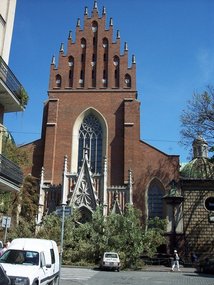
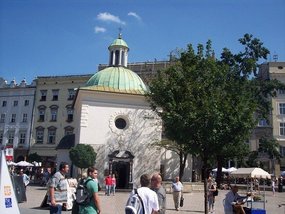
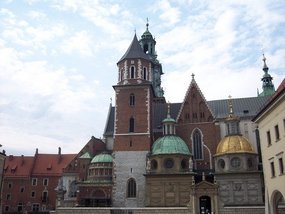
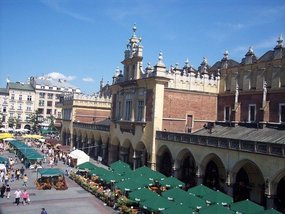
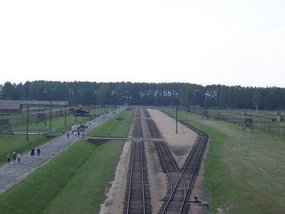
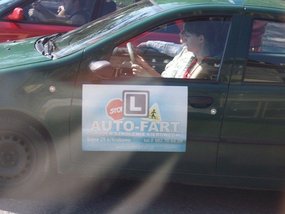
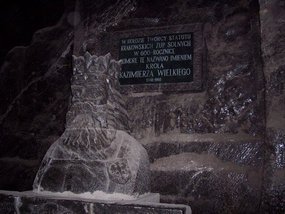
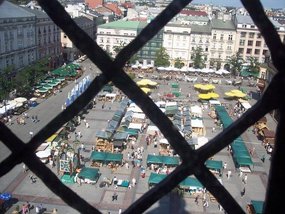
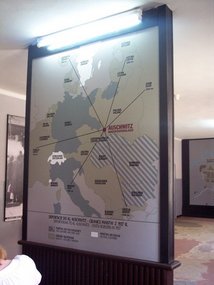

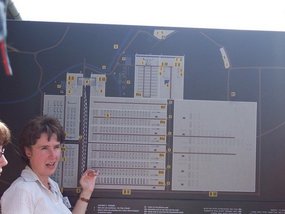
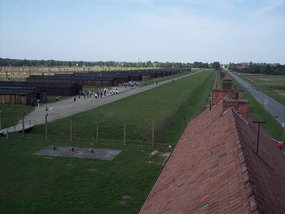
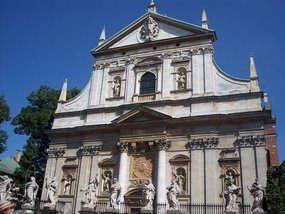

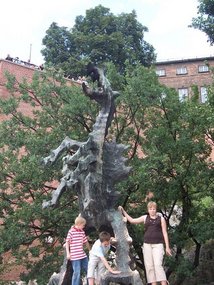
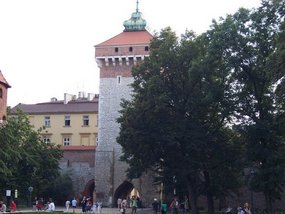
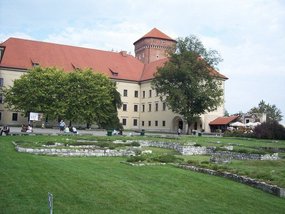
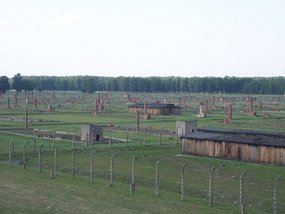
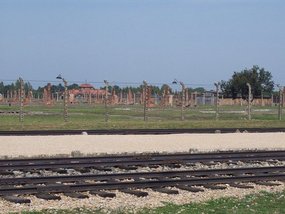
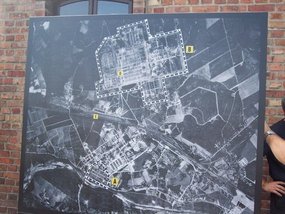
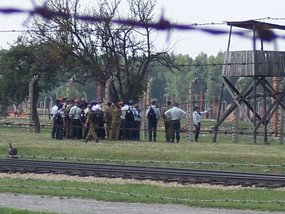
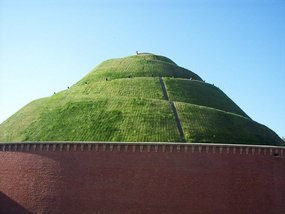
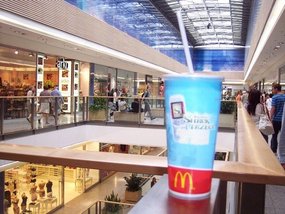
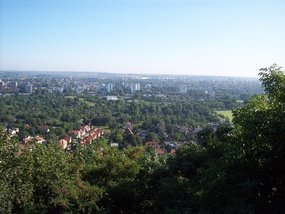
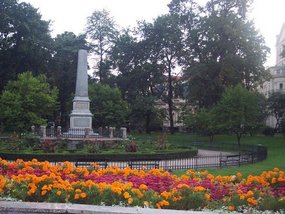
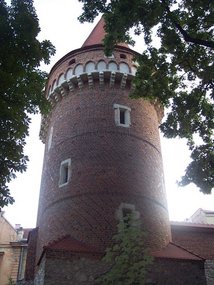
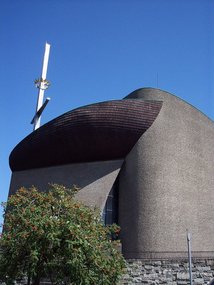
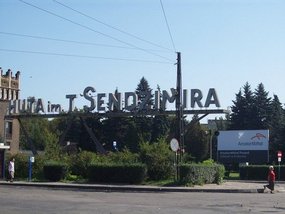
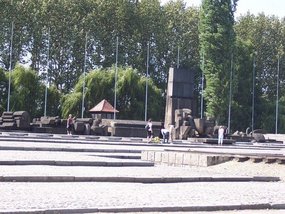
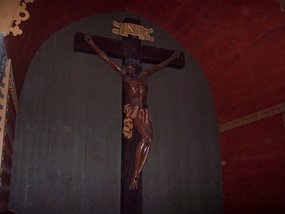










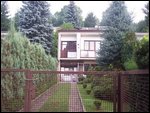
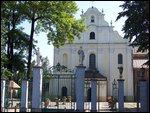
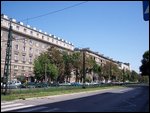
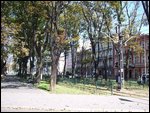
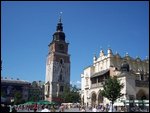
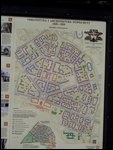
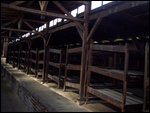
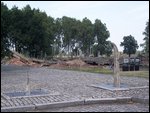
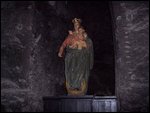

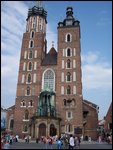
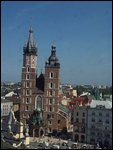


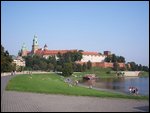
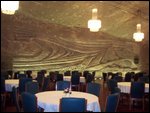
ziltenalp
2010-03-04
you did alot of research for this blog. Thank you for sharing. We are going to Krakow this summer, and I will probably use your blog as a reference. We have 4 children, and we want them to understand what happened in Auswitch.